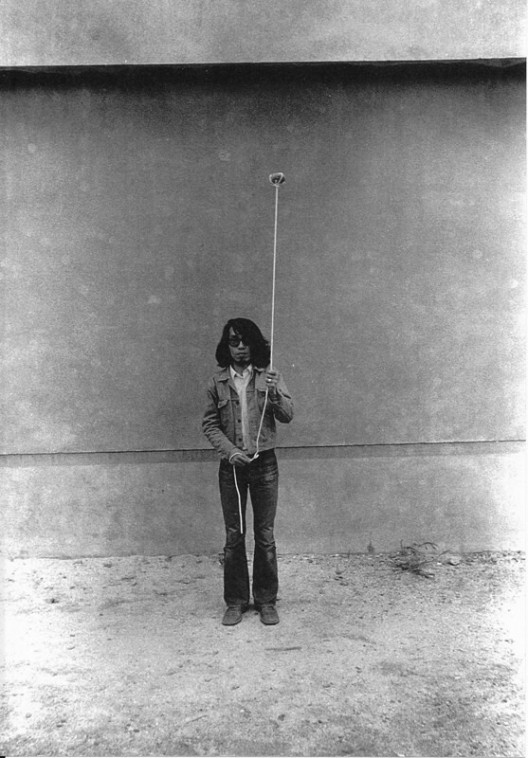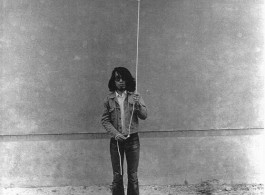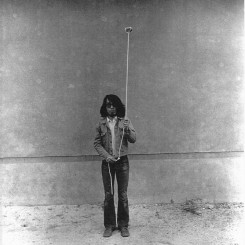
Keiji Uematsu, Stone/Rope/Man II,1974, Gelatin silver print, vintage 120 x 89 cm (47 1/4 x 35 1/8 in.) Edition 1 of 3. Courtesy the artist and Simon Lee Gallery.
Simon Lee Gallery, New York, is pleased to announce Invisible Force, an exhibition of new and historical work by Japanese conceptual artist, Keiji Uematsu, his first ever solo presentation in the United States.
Uematsu’s multidisciplinary practice strives to illuminate the invisible relationships between objects and the spaces they inhabit. For more than five decades the artist has carried out the terms of a rigorous manifesto that spotlights the de-familiarization of space and draws his viewers’ attention to the interplay of such natural forces as gravity, tension and material attraction through media including photography, drawing and sculptural installation. He writes, ‘what I want to do is to make visible existence, visible connections and visible relations appear more clearly. And to cause non-visible existence, non-visible connections and non-visible relations to appear. And to cause visible existence, visible connections and visible relations not to appear’. Uematsu is often associated with the Japanese Mono-ha group of artists, who rejected traditional methods of representation in favour of an engagement with natural and industrial materials, focusing on the ways in which they interact in space in largely unaltered states. Yet his aesthetic is set apart by his pursuit of Western theory and philosophy, which contributed to his decision to move from Japan to Germany in 1975.
Dating from the start of his career, a set of two photographic diptychs from 1973 – of which one image from each pair is on view in the gallery – demonstrate Uematsu’s preoccupation with the act of ‘seeing’. In Horizontal Position, the left-hand image depicts an empty doorway in a municipal building; in the right-hand image, the artist is stretched across the width of the door frame, held half way up by the tension between his outstretched limbs.By contrast, in Vertical Position abeam of wood stands upright in the doorway of the first photograph, while in the second the artist supports the beam so that its top reaches the lintel of the doorway: body and sculptural element are as one. Reflecting Uematsu’s interest in the relationship between body and object, the doubling of the image emphasizes the invisible forces at play, made visible by conceptual intervention.
Equally concerned by the binaries of equilibrium are a group of recent and historic sculptures.In Corner Piece II – Vertical Space,1990, a black copper cone balances improbably on its very point, which sits atop a stone set on the ground. In a later work dating from 2010, Situation – Floating Form a brass branch floats effortlessly over three evenly spaced copper cones. Here, Uematsu’s fascination with the natural world – a sign of his loose affiliation to the Mono-ha movement – is partnered with the conical motif that is a hallmark of his sculptural practice. Displayed alongside the sculptures are a group of sketches, spanning nearly thirty years. These project drawings document the artist’s unflagging commitment to sculptural innovation from the early years of his career to the present day, presenting blueprints for his work and demonstrating his continued exploration of the visible and invisible forces that shape our experience of the world around us.


